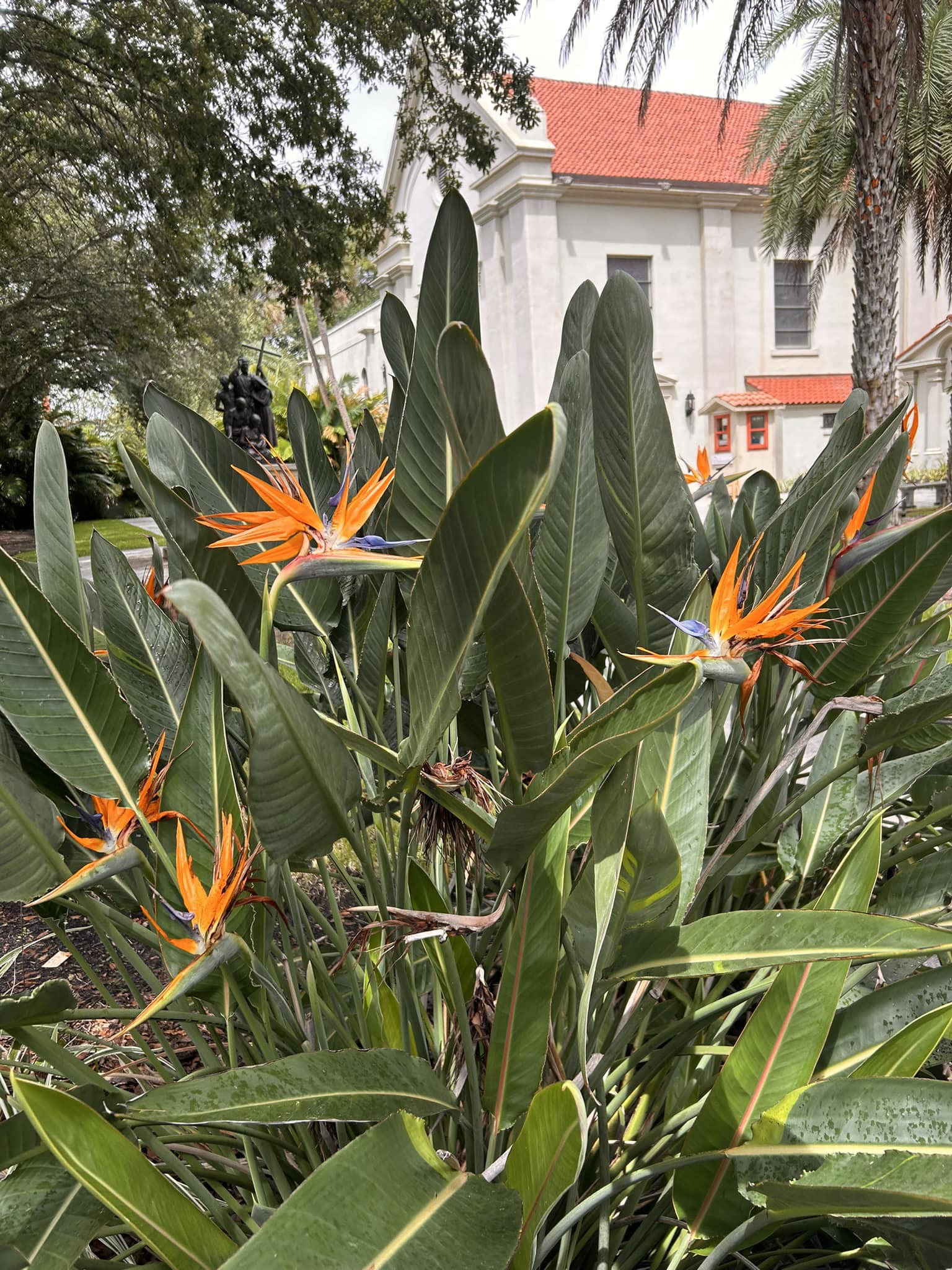
For those seeking a touch of the exotic, the Bird of Paradise plant is a captivating choice. With its vibrant orange and blue blooms resembling the plumage of its namesake, this stunning houseplant injects a burst of tropical flair into any space. But beyond its undeniable beauty, the Bird of Paradise is surprisingly forgiving, making it ideal for beginner plant parents.
This guide will unveil the secrets to planting, growing, and caring for your very own Bird of Paradise, transforming your home into a mini-paradise.
Finding Your Perfect Bird: Selecting the Right Plant
The Bird of Paradise family boasts several stunning varieties, each with unique characteristics. Here are the two most commonly encountered:
- Strelitzia Nicolai (Giant Bird of Paradise): This statuesque variety is known for its large, glossy leaves and magnificent orange and blue blooms. It can reach impressive heights indoors, making a bold statement.
- Strelitzia Reginae (Bird of Paradise Flower): This compact version features smaller leaves and boasts vibrant orange and purple flowers. It’s a fantastic choice for those with limited space.
Consider your available space and desired aesthetic when selecting your Bird of Paradise. Local nurseries or online retailers are excellent places to find healthy specimens. Look for a plant with vibrant green leaves and no signs of pests or diseases.
Building a Tropical Haven: Selecting the Perfect Pot and Location
Potting Up for Success:
- Choosing the Right Pot: Opt for a pot with drainage holes to prevent waterlogging, which can damage the roots. Select a pot slightly larger than the root ball of your Bird of Paradise to allow for future growth.
- The Power of Potting Mix: Well-draining potting mix is crucial. Opt for a mixture specifically formulated for houseplants, ensuring proper aeration and drainage.
Finding the Ideal Location:
Light is key to a thriving Bird of Paradise. Here’s what to consider:
- Sun Seeker: These plants crave bright, indirect sunlight. A south-facing window is ideal, but an east or west-facing one with protection from harsh afternoon sun can also work.
- Signs of Distress: Watch for signs your plant is unhappy with its light situation. Leaning towards the light source indicates a need for more, while pale leaves suggest it’s receiving too much.
- Temperature Talk: The Bird of Paradise thrives in warm temperatures, ideally between 65°F and 80°F (18°C and 27°C). Avoid placing it near cold drafts or heat vents.
Watering Wisdom: Keeping Your Bird of Paradise Hydrated
Watering is essential for a healthy Bird of Paradise, but overwatering is its worst enemy. Here’s a helpful approach:
- The Finger Test: Stick your finger into the potting mix about an inch deep. If it feels dry, it’s watering time. Aim to keep the soil evenly moist, but not soggy.
- Seasonal Shifts: Watering needs decrease slightly during cooler months. Adjust your watering frequency based on the season and the rate at which the soil dries out.
- Listen to Your Plant: Drooping leaves can indicate thirst, while yellowing leaves might suggest overwatering. Observe your plant and adjust your watering habits accordingly.
Feeding Frenzy: Nourishing Your Bird of Paradise
While not frequent feeders, a balanced fertilizer can give your Bird of Paradise a boost. Here’s how to provide the right nutrients:
- Feeding Time: Apply a diluted, balanced liquid fertilizer during the growing season (spring and summer) once a month. Follow the instructions on the fertilizer packaging for proper dilution.
- Less is More: Avoid over-fertilizing, as this can lead to salt buildup in the soil, damaging the roots.
- Winter Wellness: During the winter months, when growth slows, feeding can be stopped altogether.
Maintaining Paradise: Keeping Your Bird of Paradise Thriving
Beyond watering and feeding, there are a few additional practices to keep your Bird of Paradise flourishing:
- Humidity Matters: These tropical plants appreciate a humid environment. Misting the leaves regularly or using a pebble tray filled with water can help increase humidity levels.
- Cleaning Up: Regularly remove dust from the leaves with a damp cloth to allow for optimal light absorption and prevent pest infestations.
- Pruning Power: Pruning is generally not necessary, but you can remove dead or damaged leaves to maintain a neat appearance.
Witnessing the Wonder: The Magical Bloom Cycle
While patience is key, witnessing your Bird of Paradise flower for the first time is a truly rewarding experience. Here’s a glimpse into the blooming magic:
- The Blooming Season: Blooming typically occurs in the spring or summer, but it can be unpredictable, especially for younger plants.
- Patience is a Virtue: Don’t be discouraged if your Bird of Paradise doesn’t flower immediately. These plants can take several years to mature enough to produce blooms.
- The Show Begins: When flowering does occur, a beautiful boat-shaped bud will emerge from the base of the plant. This bud will slowly unfurl, revealing the exotic bird-like flower in all its glory.
- Enjoy the Spectacle: The blooms can last for several weeks, adding a touch of drama and vibrant color to your indoor space.
Troubleshooting Paradise: Addressing Common Bird of Paradise Problems
While generally low-maintenance, there are a few potential issues you might encounter:
- Brown Leaves: The culprit could be underwatering, overwatering, or insufficient light. Check your watering habits and adjust accordingly. Ensure your plant receives enough bright, indirect sunlight.
- Pests: Mealybugs and spider mites can occasionally target Bird of Paradise plants. Neem oil spray or insecticidal soap are effective solutions for these pests.
- Leaf Curl: Dry air or underwatering can cause leaves to curl. Increase humidity levels by misting the leaves or using a pebble tray. Ensure proper watering.
Following these simple steps, you can effectively diagnose and address any problems that may arise.
